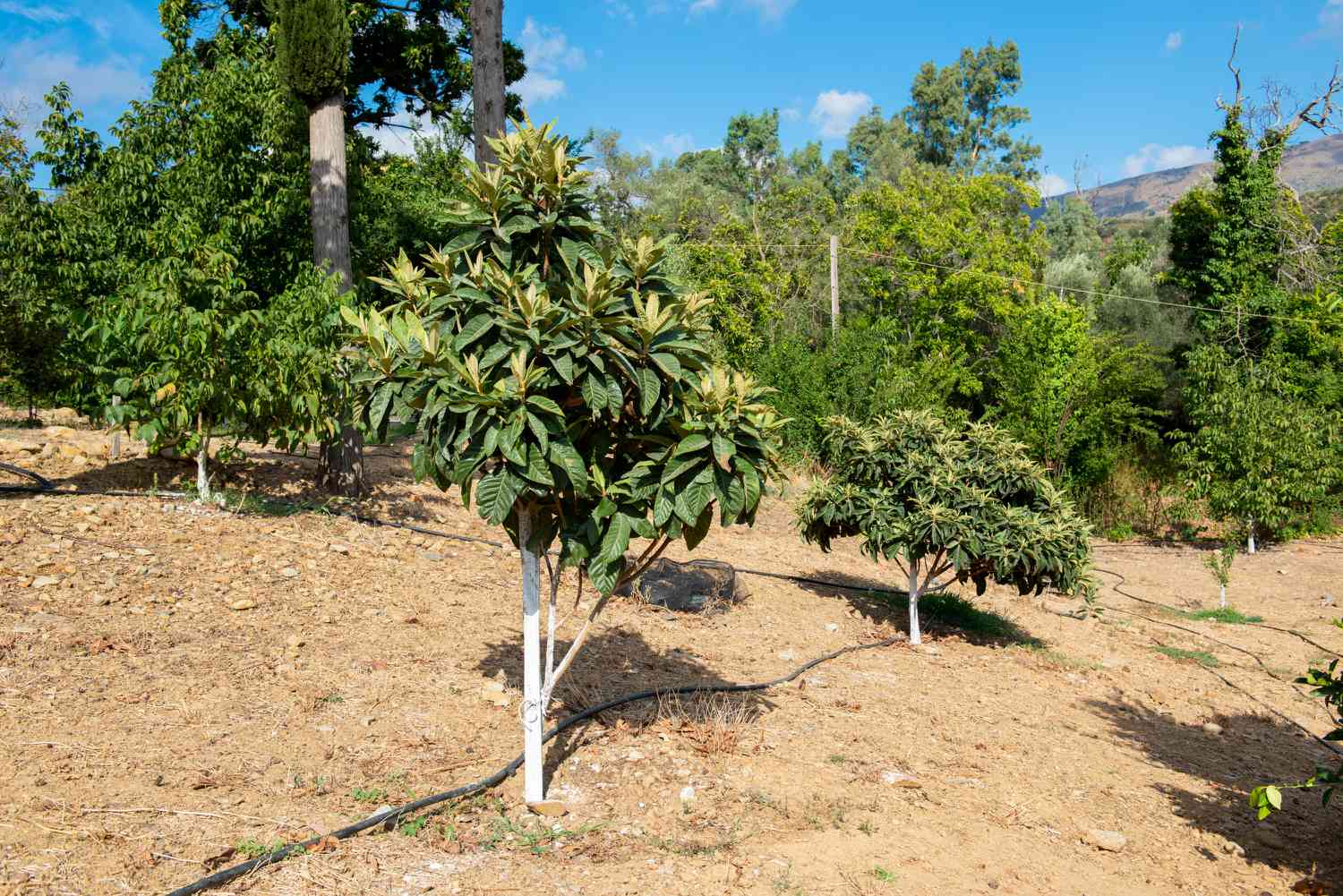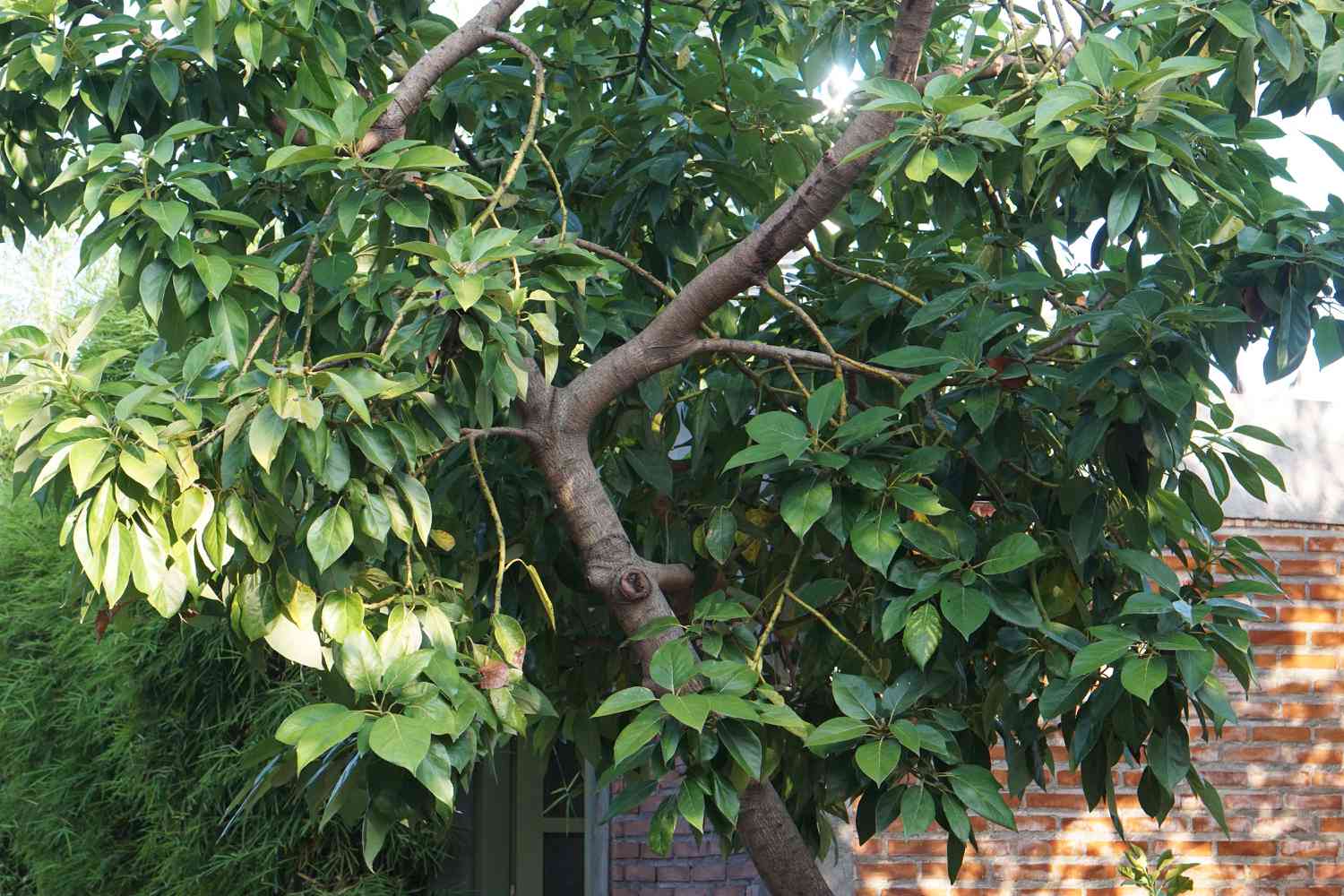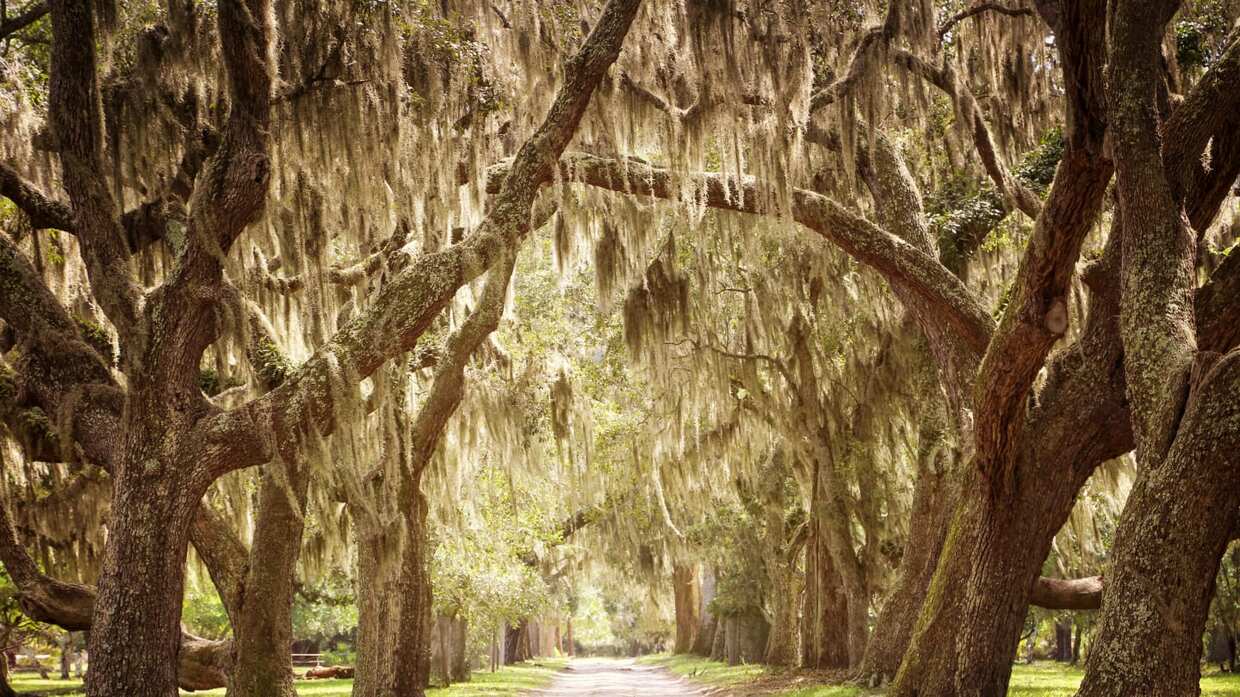Home>Gardening Techniques>Plant Care>How Trees Grow


Plant Care
How Trees Grow
Modified: January 22, 2024
Learn the essential plant care tips for helping trees grow strong and healthy. Discover the best methods for nurturing your trees and ensuring their successful growth.
(Many of the links in this article redirect to a specific reviewed product. Your purchase of these products through affiliate links helps to generate commission for Chicagolandgardening.com, at no extra cost. Learn more)
Table of Contents
Introduction
Welcome to the fascinating world of plant care! Whether you are a seasoned green thumb or just starting your journey as a plant enthusiast, understanding how trees grow is essential for their well-being. Trees are not only majestic and beautiful, but they also play a vital role in our environment by providing shade, shelter, and oxygen.
In this article, we will explore the intricacies of tree growth, from the anatomy of a tree to the factors that influence its development. We will delve into the fascinating process of photosynthesis, discover the stages of tree growth, and explore the importance of proper tree care. By the end of this article, you will have a deeper understanding of how to foster healthy tree growth and contribute to the beauty of our natural surroundings.
Before we dive into the details, it’s important to note that each tree species has its unique growth patterns and requirements. However, the fundamental principles of tree growth apply universally. By grasping these principles, you will be equipped with the knowledge to care for various types of trees effectively.
So, whether you have an oak tree in your backyard or a ficus tree in your living room, let’s embark on this journey of understanding how trees grow and thrive. With a little bit of care and attention, you can help your trees reach their full potential and enjoy the many benefits they bring to our lives.
Anatomy of a Tree
Before we explore the growth process of trees, let’s start by understanding their anatomy. Trees are marvels of nature, consisting of various components that work together to support their growth and survival.
At the base of the tree is the root system, which anchors the tree in the ground and absorbs water and nutrients from the soil. The roots not only provide stability but also play a crucial role in the transportation of water and minerals throughout the tree.
Above the ground, the trunk serves as the main support structure of the tree. Made up of layers of wood, the trunk provides strength and stability as the tree grows taller and branches out. The outer layer of the trunk, known as the bark, is a protective barrier against pests, diseases, and environmental factors.
Branches extend from the trunk, creating the tree’s canopy. These branches provide additional support and enable the tree to branch out and grow more leaves, which are essential for the process of photosynthesis.
Leaves are one of the most recognizable parts of a tree. They are responsible for absorbing sunlight and carbon dioxide and converting them into oxygen and glucose through the process of photosynthesis. This remarkable process fuels the growth and vitality of the tree.
Lastly, we have the tree’s reproductive structures, such as flowers, fruits, and seeds. These structures enable the tree to reproduce and ensure the continuation of its species.
Understanding the anatomy of a tree is essential for identifying potential issues or providing appropriate care. By familiarizing yourself with the different parts of a tree, you can better assess its overall health and take necessary steps to promote its growth and longevity.
Process of Photosynthesis
Photosynthesis is a vital process that enables trees and other green plants to convert sunlight, carbon dioxide, and water into glucose (a form of sugar) and oxygen. This process is critical for the growth and survival of trees, as it provides them with the energy needed to carry out essential functions.
The process of photosynthesis occurs primarily in the leaves of trees. Within the leaves are specialized cells called chloroplasts, which contain a green pigment called chlorophyll. Chlorophyll is responsible for capturing sunlight and initiating the process of photosynthesis.
When sunlight reaches the leaves, chlorophyll molecules absorb the light energy. This energy is then used to convert carbon dioxide from the air and water from the roots into glucose and oxygen. The reaction can be summarized by the following equation:
6CO2 + 6H2O + sunlight → C6H12O6 (glucose) + 6O2
The glucose produced through photosynthesis serves as the primary source of energy for the tree. It is used to fuel various metabolic processes, such as growth, repair, and reproduction. Any excess glucose that is not immediately needed by the tree is stored in various parts, such as roots, stems, and fruits.
In addition to producing glucose, photosynthesis also plays a crucial role in the release of oxygen. Through the process, trees release oxygen into the atmosphere, replenishing the air and contributing to the overall balance of gases.
It is important to note that photosynthesis is heavily dependent on external factors such as sunlight, carbon dioxide concentration, and water availability. Lack of sunlight or insufficient carbon dioxide levels can hinder the process and limit the tree’s growth. Similarly, insufficient water can cause the leaves to wilt, reducing photosynthetic activity.
By understanding the process of photosynthesis, we can appreciate the vital role it plays in tree growth and the health of our environment. Ensuring that trees receive an adequate supply of sunlight, carbon dioxide, and water is essential for promoting their growth and overall well-being.
Factors Affecting Tree Growth
Several factors influence the growth and development of trees. Understanding these factors is crucial for providing the optimal conditions necessary for healthy tree growth. Let’s explore some of the key factors that can impact the growth of trees:
1. Climate: The climate in which a tree grows significantly affects its growth. Different tree species have specific temperature and precipitation requirements for optimal growth. Some trees thrive in cooler climates, while others require warmer conditions.
2. Soil Quality: The quality and composition of the soil can have a significant impact on tree growth. Factors such as nutrient content, pH levels, drainage, and soil compaction can influence a tree’s ability to absorb water and nutrients. Proper soil preparation and regular soil testing can help create an ideal growing environment for trees.
3. Water Availability: Sufficient water availability is crucial for tree growth. Trees require a consistent supply of water to support photosynthesis and transport nutrients throughout their system. The amount and frequency of watering may vary depending on the tree species, climate, and soil conditions.
4. Light Exposure: Trees need adequate sunlight to carry out photosynthesis. Insufficient light can hinder their growth and result in weak and leggy branches. Planting trees in the right locations where they receive the appropriate amount of sunlight is essential for their overall health and growth.
5. Nutrient Availability: Trees require essential nutrients, such as nitrogen, phosphorus, and potassium, for healthy growth. Insufficient nutrient availability can lead to stunted or weak growth. Fertilizing trees with the appropriate nutrients can help replenish any deficiencies and promote optimal growth.
6. Competition: Trees growing in crowded environments may face competition from other plants for resources such as light, water, and nutrients. Removing nearby plants that compete with the tree can help alleviate this competition and promote its growth.
7. Pest and Disease Pressure: Pests and diseases can negatively impact tree growth by weakening the tree’s defenses or causing direct damage. Regular monitoring and taking prompt action against pests and diseases can minimize their impact and promote healthy tree growth.
8. Pruning and Training: Proper pruning and training techniques can shape the growth of trees and ensure a strong structure. Pruning helps remove dead, diseased, or overcrowded branches, allowing the tree to allocate resources to healthy growth.
By considering these factors and providing the necessary care, we can create optimal conditions for tree growth and foster healthy and vibrant trees in our surroundings.
Stages of Tree Growth
The growth of a tree can be divided into distinct stages, each marked by specific characteristics and changes in the tree’s structure. Understanding these stages is helpful for assessing the development of a tree and implementing appropriate care practices. Let’s explore the different stages of tree growth:
1. Seed Germination: The first stage of tree growth begins with seed germination. Under favorable conditions, a seed absorbs water, and its embryo starts to grow. Roots emerge from the seed, anchoring it in the soil, while the shoot grows upward toward the sunlight.
2. Seedling Stage: During this stage, the tree develops its above-ground structure. Leaves and branches begin to form, and the tree becomes more self-sufficient in terms of photosynthesis. The seedling stage is crucial for establishing a strong root system and building the foundation for future growth.
3. Juvenile Stage: In the juvenile stage, the tree continues to grow rapidly. The trunk and branches thicken, and the tree’s overall height and width increase. At this stage, the tree is still establishing its structure and may appear more vulnerable to stressors such as extreme weather or pests.
4. Mature Stage: The mature stage is when the tree reaches its full size and produces flowers, fruits, or seeds. Trees in this stage are typically more resistant to stressful conditions and have a well-established root system. They continue to grow, albeit at a slower rate compared to the earlier stages.
5. Decline Stage: Over time, trees may enter a decline stage characterized by reduced growth and increasing vulnerability to diseases, pests, and environmental stressors. Proper maintenance and care during the earlier stages can help delay the onset of decline and extend the tree’s lifespan.
It’s important to note that the duration of each stage can vary depending on factors such as tree species, climate, and overall health. Additionally, some tree species may have specific growth patterns or unique stages not included in this general overview.
By recognizing the stages of tree growth, we can better understand the needs and requirements of trees at different points in their lifecycle. Providing appropriate care and addressing potential issues at each stage can help ensure the long-term health and vitality of our trees.
Factors Influencing Tree Growth Rate
The growth rate of trees can vary significantly depending on a multitude of factors. Understanding these factors can help us better comprehend why some trees grow faster than others and how we can optimize growth conditions. Let’s explore the key factors that influence tree growth rates:
1. Species and Genetics: Different tree species naturally exhibit varying growth rates. Some species have a genetic predisposition for rapid growth, while others grow more slowly. It’s important to be aware of the growth characteristics of the specific tree species you are working with.
2. Environmental Conditions: Environmental factors such as temperature, rainfall, and sunlight play a crucial role in tree growth. Trees require favorable climatic conditions within their natural range to grow at their maximum potential. Extreme temperatures or prolonged periods of drought or excessive rainfall can hinder growth.
3. Soil Quality: The quality of the soil directly affects the availability of essential nutrients and water for tree growth. Well-draining soil with adequate nutrient content promotes healthy root development and facilitates the uptake of nutrients for optimal growth. Poor soil conditions can slow down tree growth.
4. Water Availability: Sufficient water is crucial for tree growth. Without an adequate water supply, trees may struggle to carry out vital processes such as photosynthesis and nutrient transport. Lack of water can result in stunted growth or even death in severe cases. Irrigation during periods of drought or in areas with limited water availability can help maintain adequate moisture for growth.
5. Nutrient Availability: Trees require a balanced supply of essential nutrients such as nitrogen, phosphorus, and potassium for healthy growth. Soil deficiencies in these nutrients can limit growth potential. Regular soil testing and appropriate fertilization can help ensure trees have access to the necessary nutrients.
6. Competition and Space: Trees that have ample space to grow and minimal competition from neighboring plants have a better chance of growing faster. Competition for sunlight, nutrients, and water can hinder tree growth. Providing adequate space and reducing competition can promote faster growth.
7. Pruning and Training: Proper pruning and training techniques can influence the growth rate of trees. Well-timed and appropriate pruning can improve branch structure, remove diseased or damaged wood, and encourage new growth. This encourages the tree to allocate resources more efficiently, resulting in improved growth rate.
It’s important to note that while these factors influence tree growth rate, not all trees are meant to grow at a rapid pace. Some species naturally have slower growth rates and may require patience and long-term care to reach their full potential.
By considering and managing these influencing factors, we can create an environment that maximizes tree growth potential and helps trees thrive in their surroundings.
Importance of Proper Tree Care
Proper tree care is essential for the health, longevity, and aesthetics of trees. Trees provide numerous benefits to our environment and communities, and caring for them is an investment that pays off in many ways. Let’s explore the importance of proper tree care:
1. Health and Vigor: Just like any living organism, trees require care to maintain their health and vigor. Regular maintenance practices such as pruning, watering, and fertilizing help keep trees in optimal condition, reducing the risk of diseases, pests, and structural issues.
2. Safety: Neglected or poorly maintained trees can become hazards, posing safety risks to people and property. Dead or decaying branches, weak branch attachments, or leaning trees can result in falling limbs or tree failure. Proper care and maintenance minimize these risks and ensure safer surroundings.
3. Aesthetics and Value: Well-maintained trees contribute to the beauty and curb appeal of our landscapes. Pruning helps shape trees, allowing them to exhibit their natural form and enhancing their visual appeal. Healthy, attractive trees also increase property value and provide a pleasant environment for residents and visitors.
4. Environmental Benefits: Trees play a vital role in our environment by improving air quality, reducing soil erosion, providing shade, and preserving natural habitats. Healthy trees are more efficient at absorbing carbon dioxide, reducing greenhouse gases, and producing oxygen. Proper care ensures trees can continue to provide these environmental benefits.
5. Longevity: With proper care, trees can live long and prosper. Regular trimming, pruning, and disease prevention contribute to the longevity of trees. Well-cared-for trees have a better chance of resisting pests, diseases, and environmental stressors, ensuring that they can grace our landscapes for generations to come.
6. Sustainability: Proper tree care is a sustainable practice. It minimizes the need for tree removal and replacement, reducing the consumption of resources and preserving the natural beauty and character of established trees. Caring for existing trees also helps reduce the carbon footprint associated with planting new ones.
7. Educational Resource: Trees provide excellent educational opportunities for children and adults alike. Proper tree care practices, such as planting, pruning, and identifying tree species, can foster a deeper appreciation for nature and environmental stewardship.
By recognizing the importance of proper tree care and implementing appropriate practices, we can enjoy the many benefits that trees provide while contributing to a healthier and more sustainable environment.
Conclusion
Understanding how trees grow and the factors that influence their growth is crucial for anyone interested in plant care. From the anatomy of a tree to the process of photosynthesis, each aspect plays a significant role in the development and well-being of trees.
By recognizing the stages of tree growth, we can assess their progress and implement proper care practices. Factors such as climate, soil quality, water availability, and nutrient supply can significantly impact the growth rate of trees. By providing optimal conditions and addressing potential issues, we can promote healthy and robust tree growth.
Proper tree care is essential not only for the health and safety of trees but also for the numerous benefits they provide to our environment and communities. Well-maintained trees enhance the aesthetics of our landscapes, increase property value, and contribute to a healthier ecosystem. They provide shade, improve air quality, reduce soil erosion, and serve as habitats for wildlife.
Caring for trees is an investment in the future. With regular maintenance practices such as pruning, watering, and fertilizing, we can extend the lifespan of trees and ensure their continued beauty and benefits for generations to come. Additionally, proper tree care practices promote sustainability by minimizing the need for tree removal and reducing our environmental impact.
So, whether you have a backyard filled with trees or a single houseplant, understanding and implementing proper tree care practices is essential. By nurturing and caring for trees, we can create a healthier, more beautiful, and sustainable environment for ourselves and future generations to enjoy.









